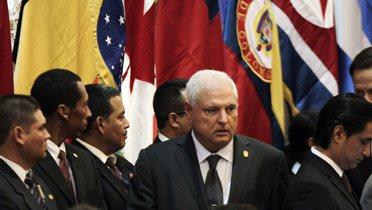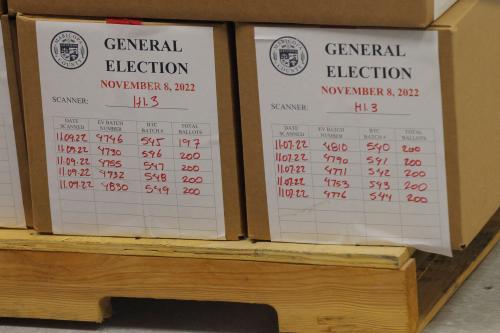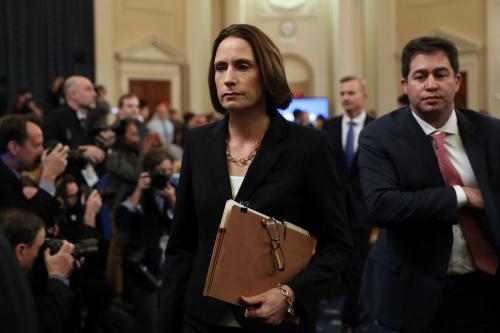Introduction: Even by Latin American standards, the past thirty years have been momentous in Central America. In the 1970s and 1980s, long-standing social inequalities and political vulnerabilities gave way to civil wars in much of the isthmus. The region became one of the frontlines of the Cold War and a major obsession in Washington’s foreign policy circles. Later, external pressures and successive feats of political courage by Central American leaders brought a negotiated end to those conflicts and a transition process in which democratically elected governments replaced authoritarian regimes, some of them unspeakably brutal. The result of these achievements was both optimism in the region’s development potential and a visible loss of interest on the part of external actors, particularly the United States. After being the Afghanistan of the 1980s, Central America essentially dropped off the U.S. radar screen for the past twenty years.
Lately, it has made a comeback into the headlines but for all the wrong reasons. Today, Central America seems to be reverting to its bad old ways. Three Central American countries—Honduras, Nicaragua and Guatemala—are facing serious political challenges that render the frailty of their democratic institutions all too apparent. In 2009, Honduras saw the ouster of President Manuel Zelaya, a democratically elected leader—a very erratic one too—and a near democratic breakdown, which in some ways was a throwback to a dark age of Latin American political history. Despite the swearing in of a new democratically elected president, Porfirio Lobo, over one year ago, the structural drivers of the Honduran debacle remain untouched to this day.
In so far as they are related to the persistence of old and unmet development challenges, as well as to the emergence of some very complex new ones, the political travails seen today in some Central American countries are here to stay. As has happened before, Central America, too close to the United States to be ignored, may yet find a way into the crowded radar of the White House, as suggested by President Obama’s visit to El Salvador in March of 2011.
These pages will examine three sets of issues that remain crucial to Central America’s development and will continue to make the region prone to political crises and democratic reversals. The first issue is the weakness of the state and, more generally, of political power; the second is the region’s uncertain path towards integration with the world economy; and the third, and arguably most pressing, is crime and violence. All of them need to be dealt with in a consistent manner and with the help, in some cases, of external actors. Before addressing them, two caveats are in order. The first is that making generalizations about Central America is risky because the region is surprisingly heterogeneous.
Meanwhile, Nicaragua is witnessing the demise of the democratic institutions that, with all their imperfections, were the tangible legacy of not one but two different civil wars and more than 100,000 deaths. The re-election of former Sandinista strongman Daniel Ortega in 2006 has brought an onslaught on checks and balances and basic civil liberties, most visible in the fraud perpetrated in the 2008 local elections and in the president’s blatant unconstitutional efforts to remain in power beyond the end of his current term in 2012. Like the 2009 events in Honduras, the Nicaraguan slide into authoritarianism is also a sign of the troubling effects that President Hugo Chávez’s experiment in Venezuela— to which Ortega is closely aligned—is having throughout the region. Guatemala, in turn, faces a deeper problem that goes beyond the nature of the current government to encompass the very ability of its state to exert authority over its territory. Severely challenged by organized crime, Guatemala faces an existential crucible, whose result will have regional implications.
There is a clear divide between a more developed south—comprised of Panama and Costa Rica—and a far less developed center and north, i.e., Nicaragua, Honduras, Guatemala and, to a lesser extent, El Salvador. Panama’s Human Development Index is at roughly the same level as Croatia’s, whereas in terms of human development Guatemala is at a similar stage as Equatorial Guinea. Similarly, the region’s richest country is more than five times as wealthy in per capita terms as the poorest one. The second caveat is about optimism and pessimism. This paper will dwell on challenges and pending issues, which will give a somber flavor to these pages.
Yet, when discussing Central America’s challenges we must never forget where the region hails from. Little more than two decades ago civil wars were raging in three countries in the region and a narco-dictator, Manuel Antonio Noriega, was ruling another one. As will become evident below, the problems that nations in the isthmus face are huge, but they have come a long way. Despite everything, the glass in Central America is half full, not half empty. This is particularly true if some of the region’s positive structural traits are brought into the picture.
The first and most obvious is its geographical location, which gives it easy access to the largest and richest economy in the world, an extraordinary biodiversity, and a huge potential for the development of alternative energy sources, such as hydropower, geothermal energy, and solar energy. Further, Central America is in the middle of a demographic transition that provides it with a significant bonus. The current generation will have the advantage of having a lower dependency burden, i.e., more people in the labor force and fewer children and elderly people, than any previous or future generation. This imposes the burden of creating jobs at an accelerated pace, but it also means that should Central America make the necessary investments to increase the current cohort’s productivity, it could see a major leap in its human development level.
With those two qualifications out of the way, let us probe three crucial development challenges faced by the isthmus.




